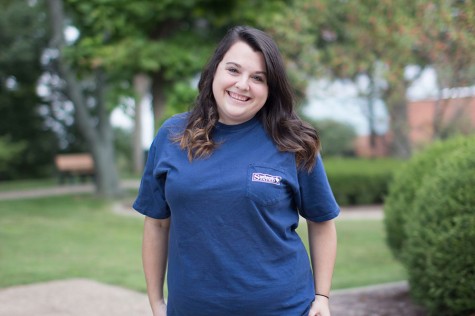IU Southeast support group aims to help smokers break the habit
December 3, 2014
While going through daily routines and just trying to get through the day at work but you get that one customer who has to make everything harder. The customer set you off and now all you want to do is smoke a cigarette, but you decided to quit. The struggle is real.
According to the Centers for Disease Control and Prevention, cigarettes have that kind of power over about 42.1 million Americans.
By U.S. Census region, in 2012 smoking prevalence was significantly higher in the midwest than anywhere else in the county; about 26 percent of people in midwest America are smokers and only 14.2 percent in the west.
According to the CDC, 68.9 percent of adult smokers wanted to quit smoking while 42.7 percent had made attempts to quit.
Nicotine dependence is the most common form of chemical dependence in the U.S., according to a study done by the CDC. The study shows that nicotine withdrawal symptoms—including anxiety, irritability and cravings—are usually the reason people return to smoking.
There are, however, numerous way to quit smoking that help with withdrawal symptoms and nicotine dependency. Michael Day, director of personal counseling services and licensed clinical psychologist, has started his first support group to help smokers kick the habit.
The group is using the Cooper Clayton Method to stop smoking, a method that started over 25 years ago by two faculty members at the University of Kentucky. The program utilizes proven methods that include education, skills training and social support.
“We’re utilizing group support and nicotine replacement. The group is using the Nicoderm CQ patch—it’s the best,” Day said.
This is the first group that Day has worked with and he said that it is going well, although he said currently there are only two people from the community attending.
The CDC recommends other methods to quit smoking that include clinical interventions, counseling and behavioral therapies, along with nicotine replacement.
Julie Faulds, bookstore manager, said she smoked for 31 years and quit by switching to an electrionic cigarette, which is a smoking device that uses vapor to give the feel of smoking tobacco.
“I had tried quitting before and nothing worked, the gum patches, nothing. It’s been 11 months since I quit smoking and the longest I had ever quit before was about six weeks,” Faulds said.
Day said the most important thing to do when you quit smoking is come up with a detailed plan to handle urges.
“What are you going to do in those moments—mints, gum, deep breaths? Do whatever you can to distract yourself in those moments,” Day said.
According to the CDC, smoking causes one in five deaths in the U.S. each year. The CDC also says that tobacco smoke contains a mix of more than 7,000 chemicals; hundreds of which are toxic, and about 70 that are potentially cancer causing. Stopping smoking lowers the risk for many types of cancer, reduces the risk for coronary heart disease and stroke, and is associated with many other health benefits.
According to The American Heart Association website, second-hand smoke, also known as involuntary smoking or passive smoking, are also known to cause several health risks such as cancer and asthma-related problems.
Sophomore hHuman rResources major, Summer Messer, human resources sophomore, grew up around second-hand smoke and said she now suffers from health issues because of it.
“Second hand smoke is worse, because it’s like smoking, but you don’t get the filter,” Messer said.
According to the American Heart Association, quitting smoking has never been easier. In the state of Indiana, all stop-smoking groups are free. The only cost is for nicotine patches, gums, or a person decides to use to quit. In Kentucky, all groups are free and offer free nicotine patches while attending a group.
If you’re interested in quitting smoking and need help, contact Michael A. Day at micaday@ius.edu. You can also try these helpful websites: www.QuitterInYou.org and www.QuitNowKentucky.org












